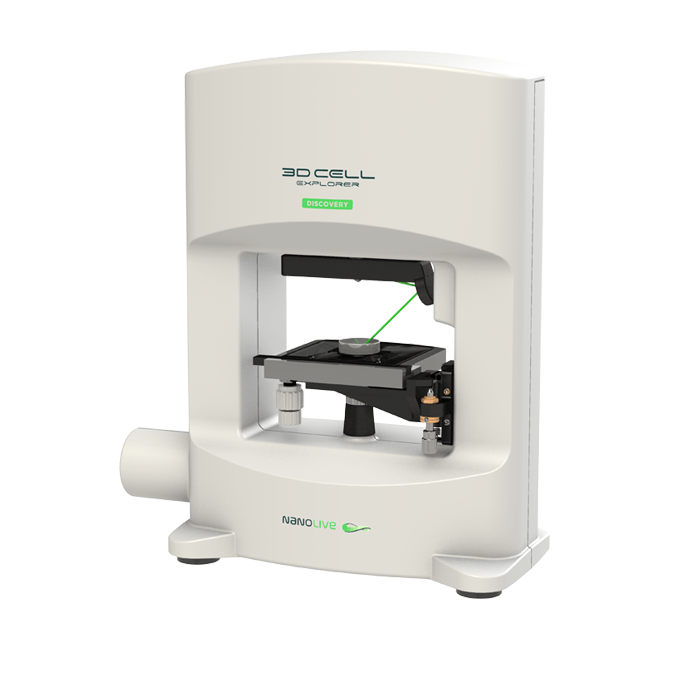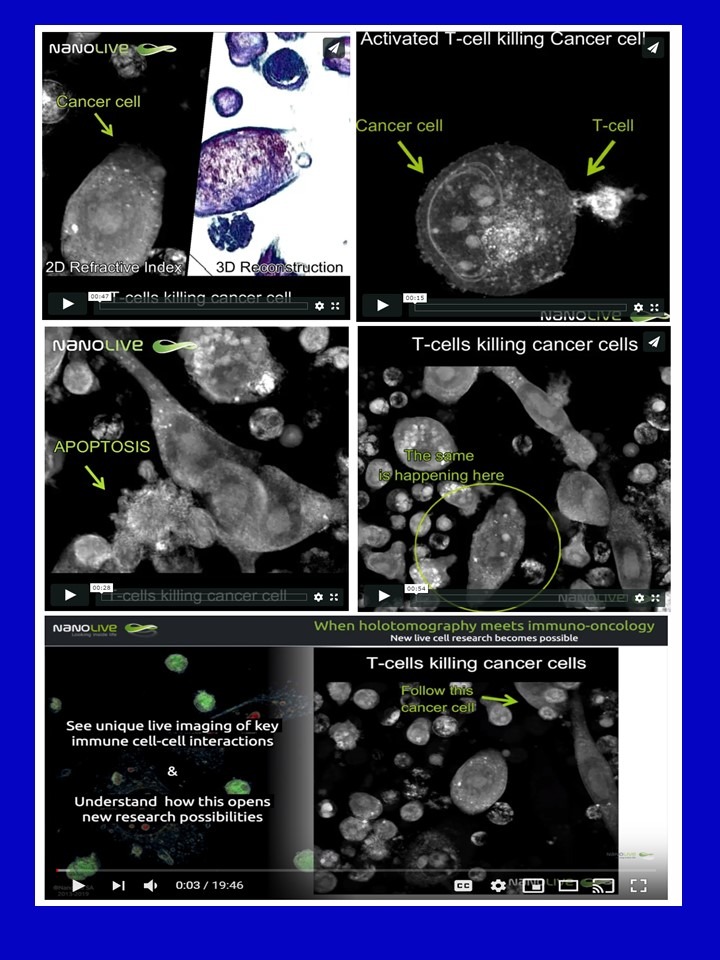
3D Cell Explorer - Live Cell Imaging Platform
Biological MicroscopyDigital MicroscopyLight MicroscopyLive Cell ImagingQuantitative Phase ImagingSuper Resolution MicroscopyTomographic Microscopy

Immunotherapy has been acquiring big visibility in recent years and even more in the last months thanks to the 2018 Nobel Prize for medicine. Immunotherapy involves re-engineering T-cells so that they can recognize and kill cancer cells. This type of therapy has shown promising preliminary results in fighting lymphoma.
Microscopy is the elected method to study immune cells interactions and their potential for cancer healing. However, technologies that are available nowadays mainly rely on fluorescence, and fragile primary immune cells are heavily perturbed and eventually killed by staining procedures and phototoxicity.
The research on immune-oncology will greatly benefit from a high-resolution, label-free approach allowing to image immune cells interplays in a marker-free, non-invasive way.
Nanolive’s 3D Cell Explorer opens the door for new observations and for long-term live cell imaging (up to weeks of continuous imaging) with unprecedented spatio-temporal resolution (<200nm; 1img/2sec).
Find further information and more examples on the following link:
Nanolive wants to congratulate the 2018 Nobel Prize in Physiology or Medicine who went to James P. Allison and Tasuku Honjo for their discovery of cancer therapy by inhibition of negative immune regulation.
By stimulating the inherent ability of our immune system to attack tumor cells this year’s Nobel Laureates have established an entirely new principle for cancer therapy. James P. Allison studied a known protein that functions as a brake on the immune system. He realized the potential of releasing the brake and thereby unleashing our immune cells to attack tumors. He then developed this concept into a brand new approach for treating patients.
In parallel, Tasuku Honjo discovered a protein on immune cells and, after careful exploration of its function, eventually revealed that it also operates as a brake, but with a different mechanism of action. Therapies based on his discovery proved to be strikingly effective in the fight against cancer. Allison and Honjo showed how different strategies for inhibiting the brakes on the immune system can be used in the treatment of cancer. The seminal discoveries by the two Laureates constitute a landmark in our fight against cancer!
Dr. Mathieu Frechin, Head of Quantitative Biology at Nanolive will introduce you to our holotomographic microscopy and its implications in the field of Immuno-Oncology. During the webinar he will discuss the opportunities that are created by the usage of Nanolive’s label-free technology in the field of immune system research. In particular, the following topics will be covered:
